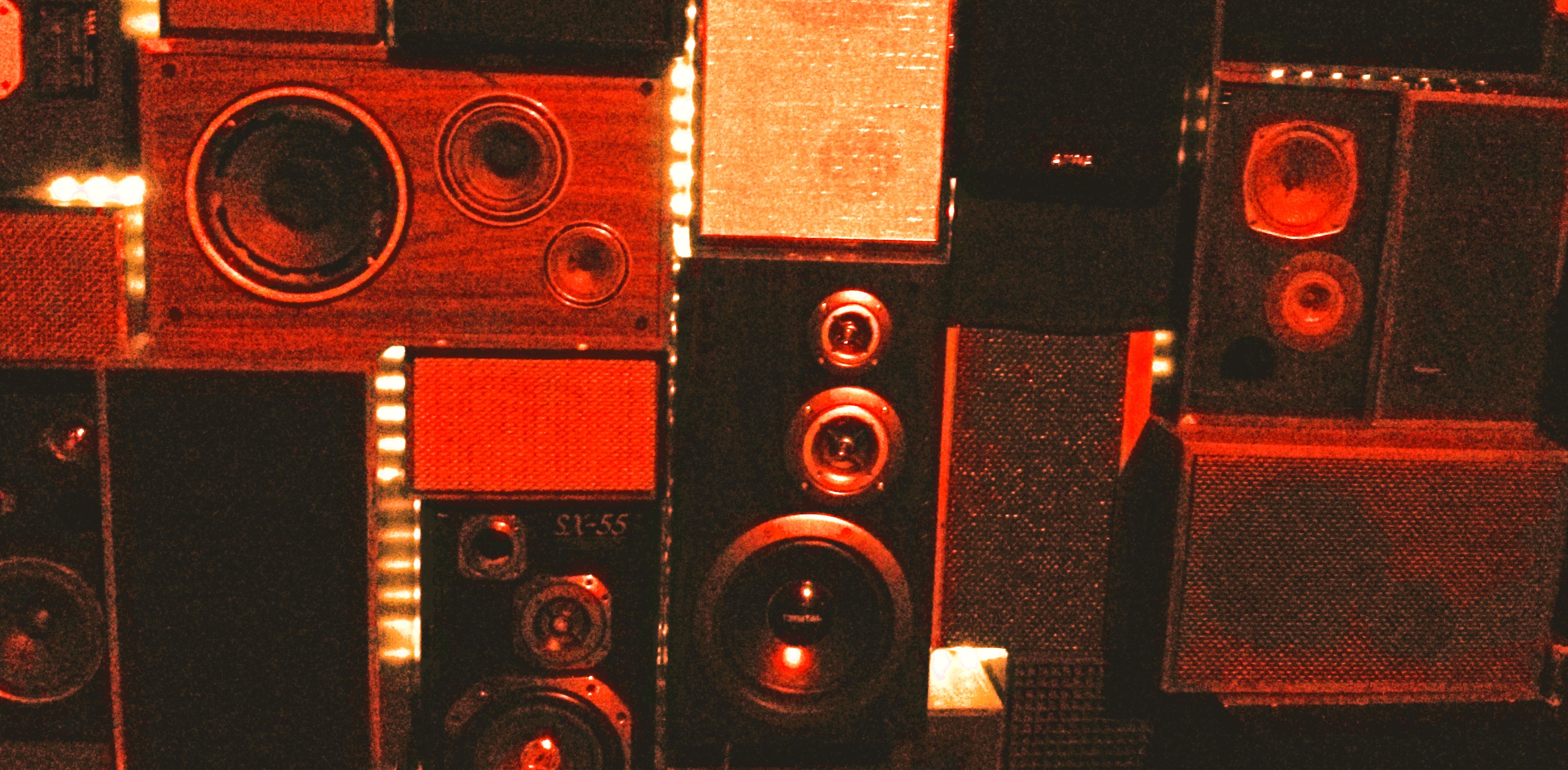El Sindicato de Altavoces with M. Capdevila, M. von Chobiak, F. Llompart, O. Graus
Tuesday, 21 November 2023 at 20:00h. Sala Aranyó (UPF Campus Poblenou). Free entry.

EL SINDICATO DE ALTAVOCES
Curator: Pablo Fredes
Program
Mercé Capdevila: Fons de Mar
Mila von Chobiak: Was es war Wasser” – 2023
Francesc Llompart: Per camins salvatges
Oriol Graus: Murmuris. Immersió
About the composers and works:
“Fons de Mar” 8’47”
This music has been created from two planes of different means: Concrete sounds and electroacoustic sounds. The concrete sounds, recorded in exterior and interior spaces, were subsequently manipulated, taking some of their parameters to the extreme. Strictly electronic sounds were approached organically; sometimes, they find a non-linear sense and others, thickness and perspective. Direct sounds and others muffled, allow their electricity and energy to stand out while trying to avoid any mimetic use When resonating, the sounds overlap by joining with the subsequent sounds and some close in on themselves, while some irregular pulsations allow them to act as tensors.
Mercè Capdevila
Born in Barcelona in 1946, she studied at the Conservatorio Superior Municipal de Música de Barcelona. At the same time, she also studied Plastic Arts at Escola Massana in Barcelona, as well as at the Kunsthandwerk Schule in Pforzheim in Germany. Capdevila later worked in electroacoustic music at Phonos Labs in Barcelona with professor Gabriel Brncic and attended composition courses with Luigi Nono, Josep M. Mestres-Quadreny, Coriun Aharionan, Lluis Callejo, Carmelo Bernaola and Luis de Pablo. During the years 1993-94, Capdevila worked in Aaron Copland's studio at New York University Queens College as a guest composer. Her works are in 2 monographic CDs and some other collective CDs.
“Was es war Wasser” – 2023
Piece conceptually treated from three states of water: solid, liquid and gaseous and the relationship that these states have with kinetic energy. In the case of the solid state, the kinetic energy of the molecules is very low, being almost immobile. In the liquid state, the kinetic energy of the molecules increases, breaking the hydrogen bonds and leaving some molecules loose and the majority united. In the gaseous state, the kinetic energy is such that all hydrogen bonds are broken, leaving all molecules free. These three states of water are interpreted sonicaly, as well as the breaking of hydrogen bonds, from variations created exclusively from 5 files and it is from this new organic that the sound matter is arranged in space and time. , creating structure and form from a dialectical process between the benefits offered by the matter and the previously drawn plan. “Was, es war Wasser” is therefore the result of the tension created between the innate proposal of the material, the manipulation of it and the coexistence of both in a formal macro approach.
Mila von Chobiak
Mila von Chobiak/Fernando Jobke has a degree in musical composition (U.N.Q. Bs.As. Argentina), specialized in contemporary and electroacoustic music. He has perfected his studies in the Postgraduate Course in new Compositional Techniques (Barcelona, Pompeu Fabra) and in the Master's Degree in Sound Art (University of Barcelona). He has presented his pieces at different festivals and has composed music for plays in addition to developing a parallel career in performance (action art), physical theater, and comedy. Among his productions, the installation “On the inconvenience of being born” stands out, which was supported by the OSIC scholarships for research (2022).
Per camins salvatges
This piece is a work of exploration of sounds in which I have imagined as if these sounds opened like flowers to show their interior. Starting from this image, I have tried to separate the different internal components of the sounds and gradually transform them into something unpredictable and thus turn each sound, previously compact, into a bouquet of diverse elements that separate more and more from their origin.
Francesc Llompart
Maó, 1987. He began composition studies in 2005 at Esmuc with Bernat Vivancos and Lasse Thoresen and in 2008-2009 he studied with Georg Friedrich Haas during a one-year stay in Basel. Later, he took the Master in Sound Art at the UB and started in electroacoustic music with José Manuel Berenguer. He has received the "Choral Composition Award" from the FCEC for "Enamorat i alġota" and "Sa nuvia d'Algendar" (2008), the "Sound Silence Thought" award for "De temperatures i ordres" (2020) and the "Ise-Shima" prize for "Horizon of Memory" (2021).
Murmuris. Immersió. (2023). Estrena
Versió: 16 pistes.
This work that we will listen to today is the third of a trilogy with the title Murmuris. The first is called "The voices of the forest", the second, "The voices of the water" and this third "Immersion". All of them have two versions: stereophonic and another multifocal, in this case there are 16 tracks that will be heard each of them through its corresponding speaker. This work is purely musical, it has no visual component to accompany it, therefore, I suggest you listen to it with closed eyes. Thanks.
Oriol Graus Ribas
Born in Barcelona in 1957. He studied composition and electroacoustic music with Gabriel Brncic, and computer music with Lluís Callejo. He has attended courses by Luigi Nono, Dieter Schnebel and Josep Mª Mestres-Quadreny. In 1986 he received a scholarship to participate in the “33 Internationale Ferienkurse für Neue Musik” in Darmstadt. (Germany). Founding member of La AMEE (Association of Electroacoustic Music of Spain) and between 1997 to 2000 he was vice president of the Catalan Association of Composers. He was part of the traditional music group Lahiez and the instrumental contemporary music group Phonos. Between 1990 and 1997 his work focused on the electronic transformation of the sound of traditional acoustic instruments. Interested in applying certain compositional techniques typical of electronic music to instrumental music, in 1999 his “Stella Fugacis” was premiered by the Spanish Radio and Television Orchestra, directed by Enrique García Asensio. Since 2009 his work has focused mainly on electroacoustic music, especially in multifocal broadcast projects with systems of 8 to 30 loudspeakers. Together with artists from other disciplines, he has participated in interdisciplinary and multimedia projects, occasionally creating music for dance, short films and videos.
Supported by:

